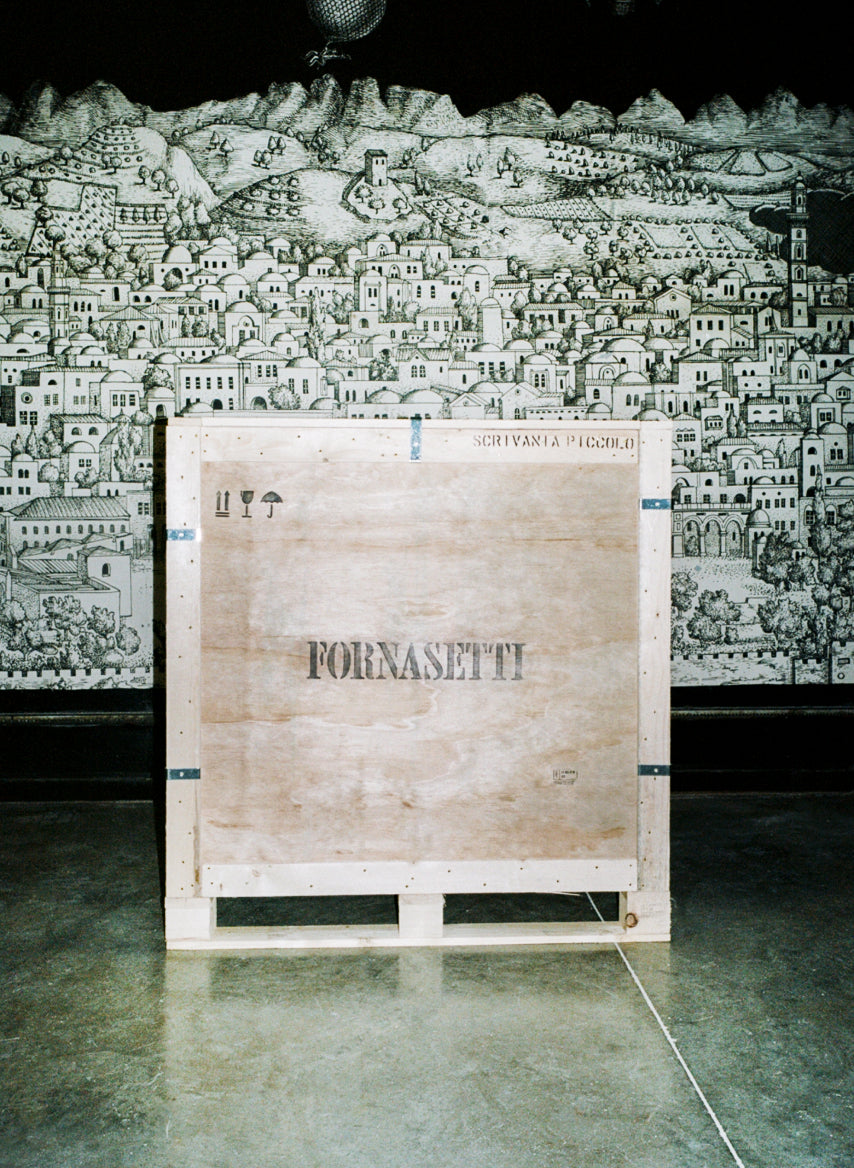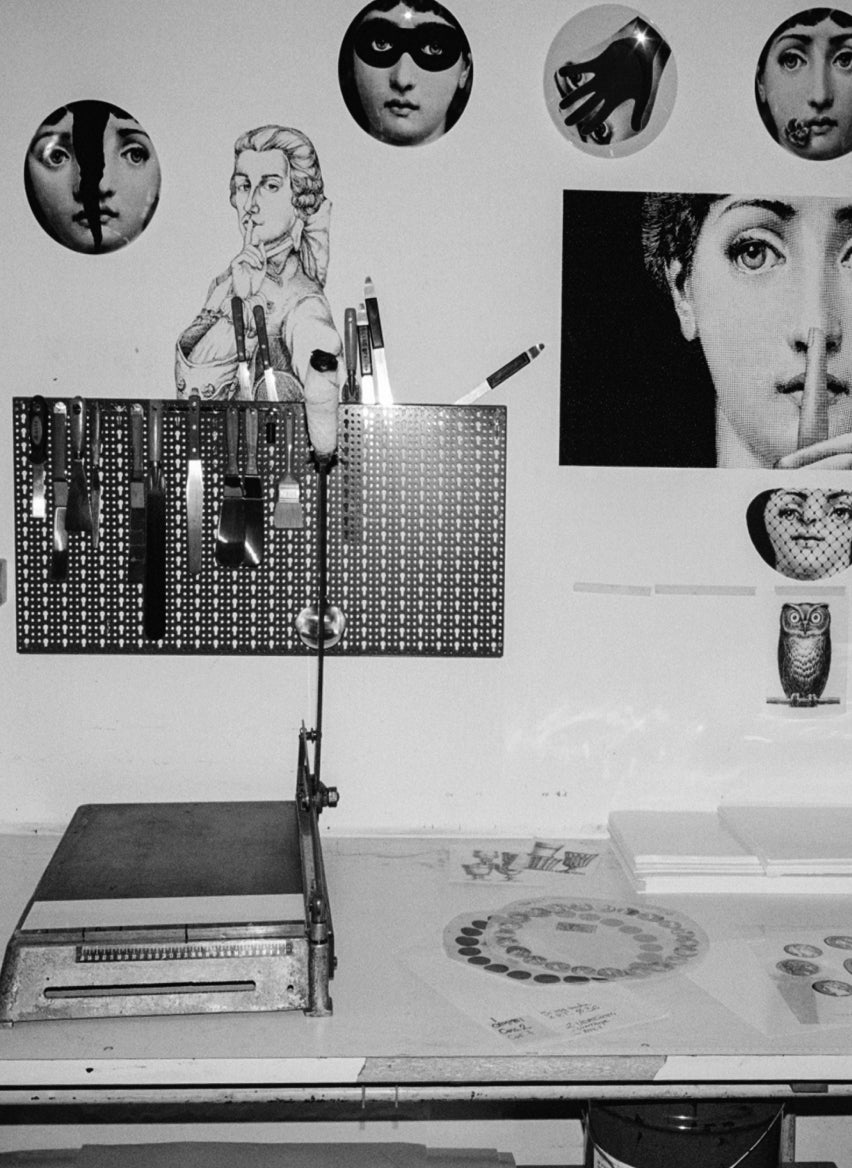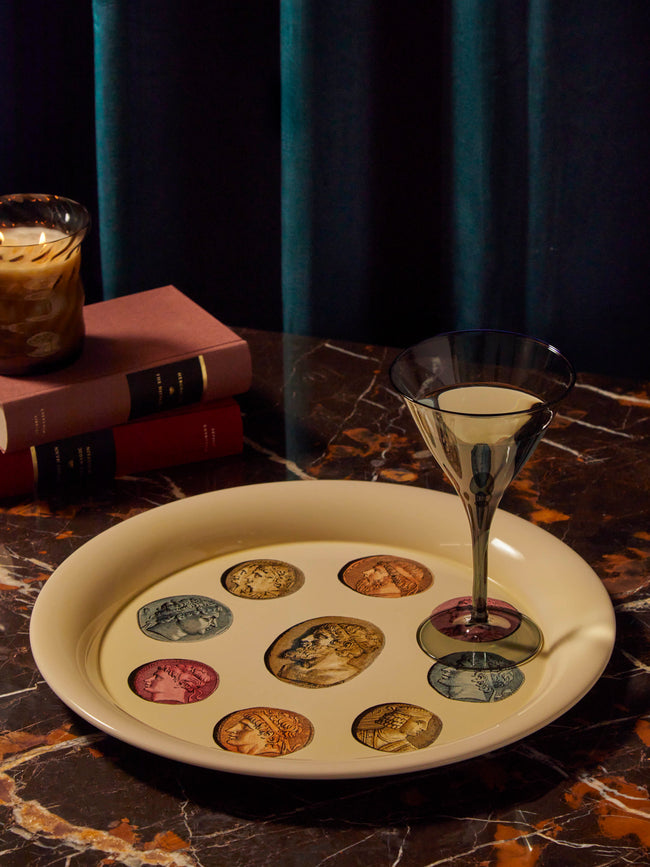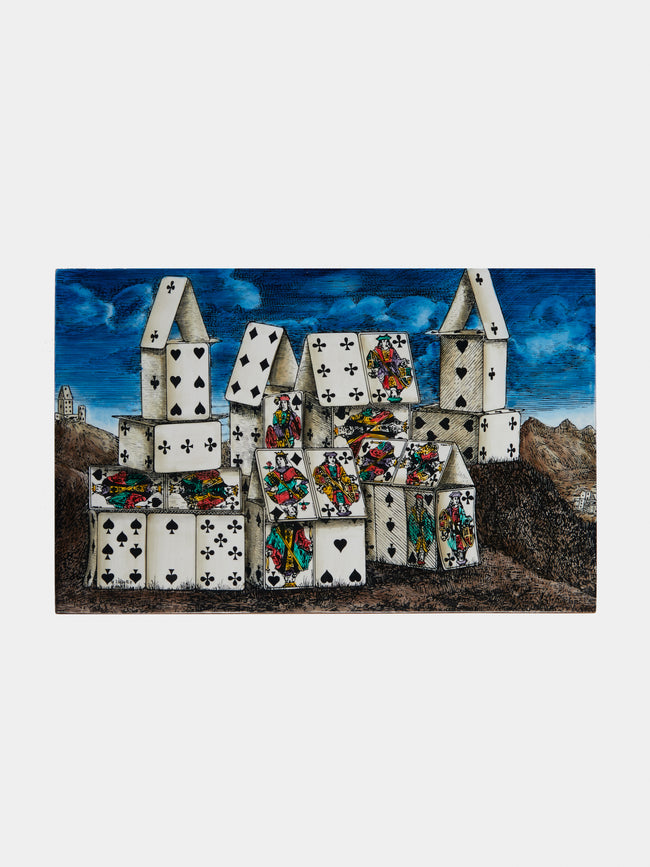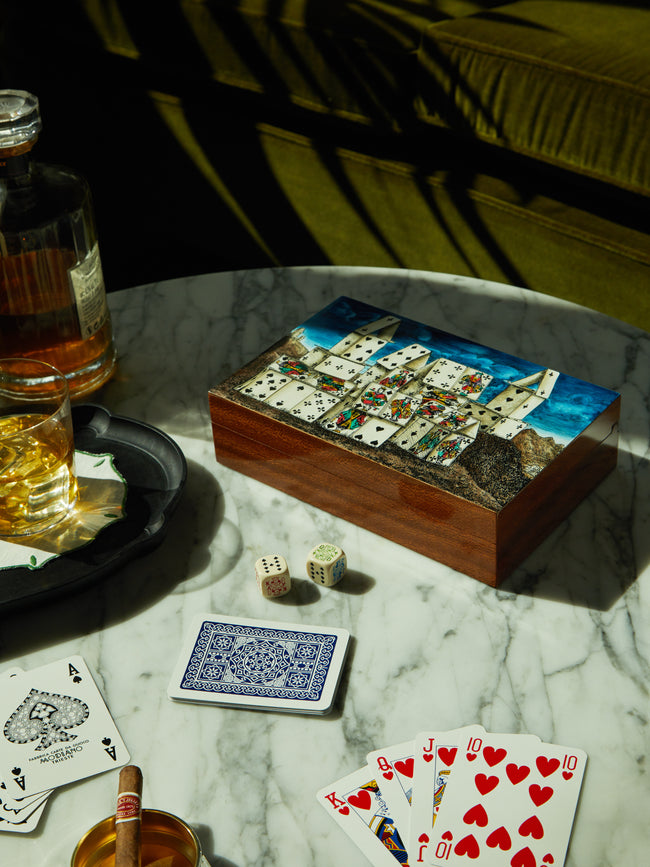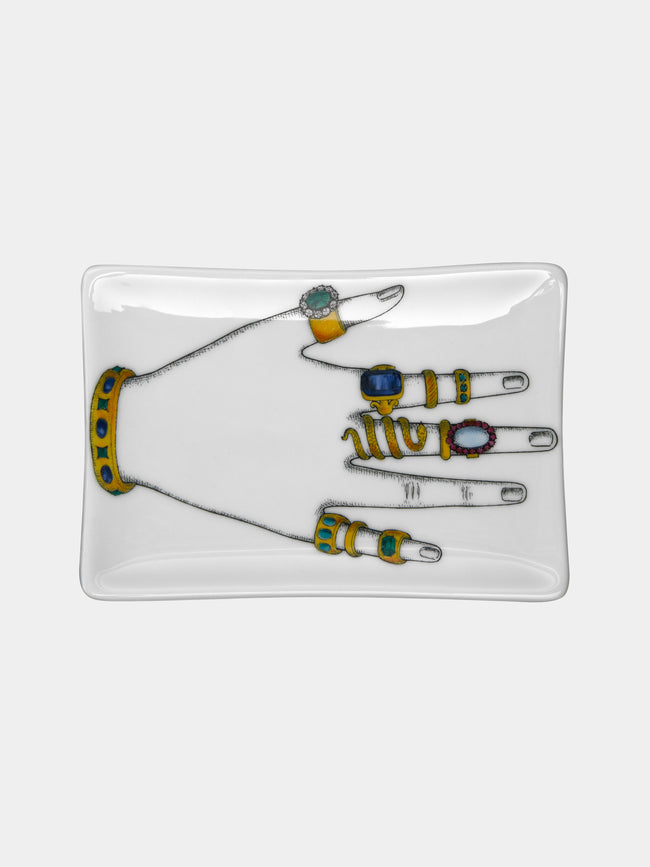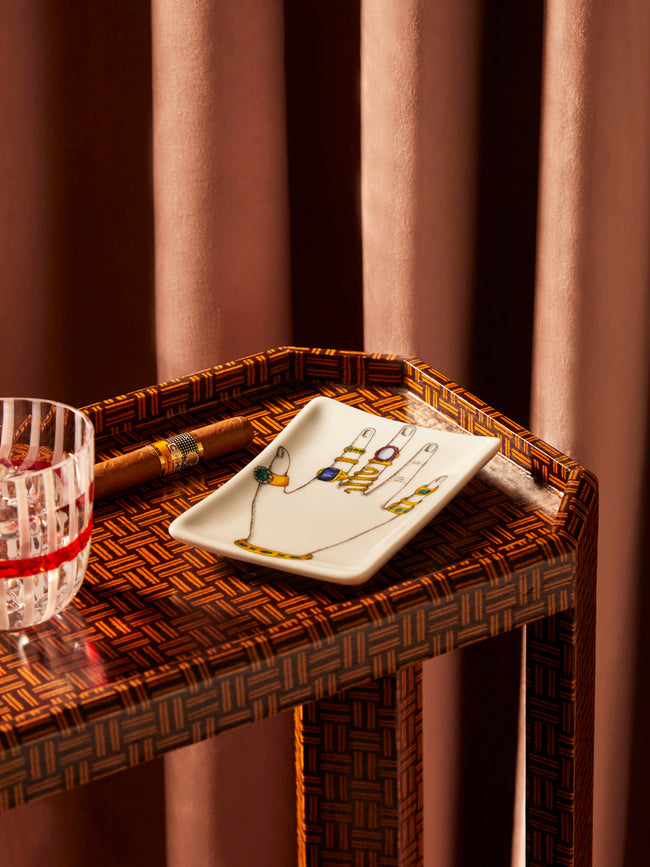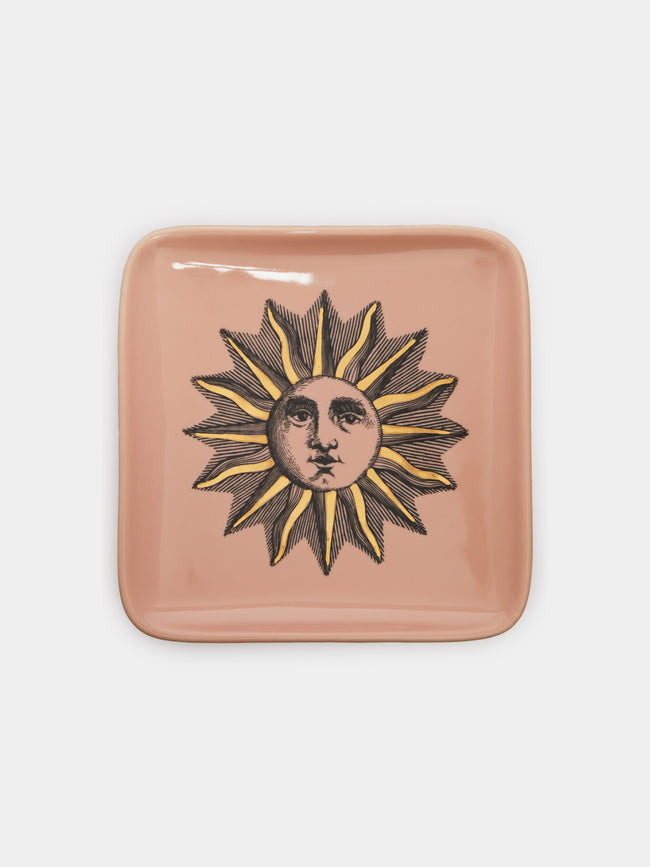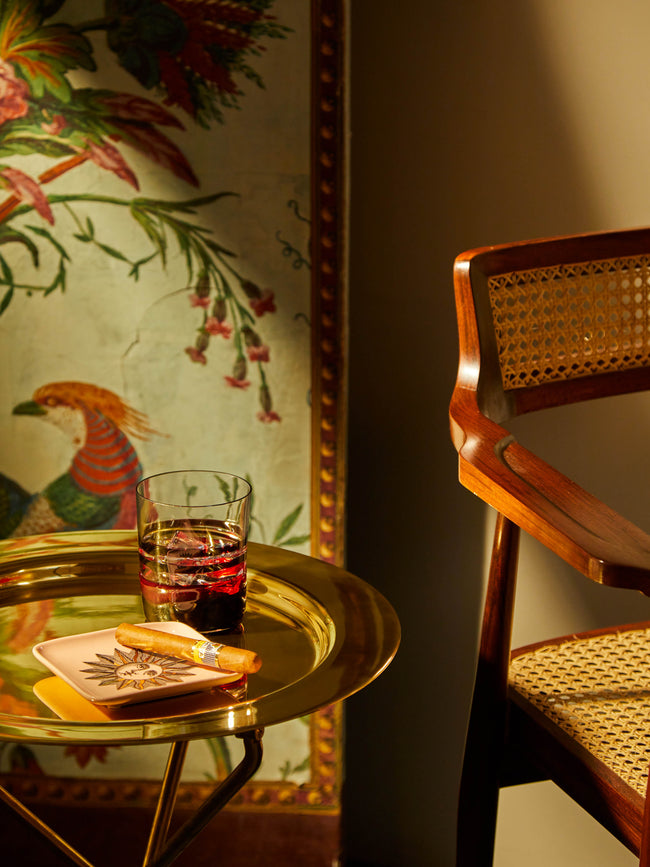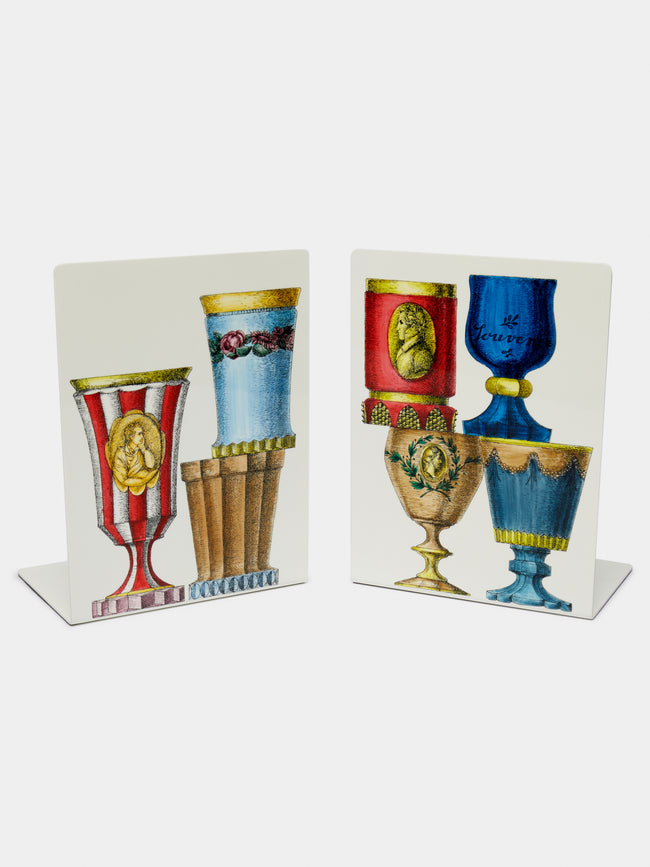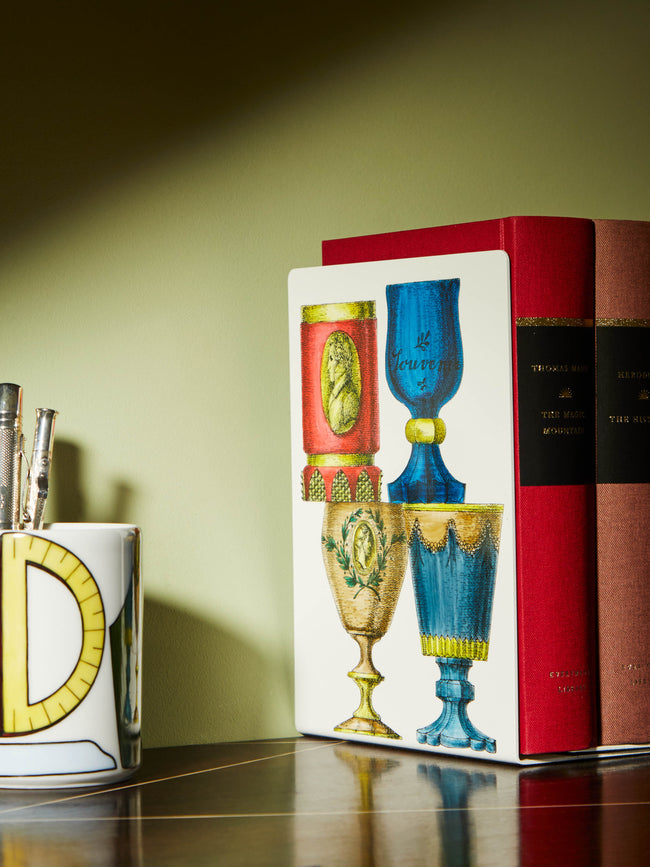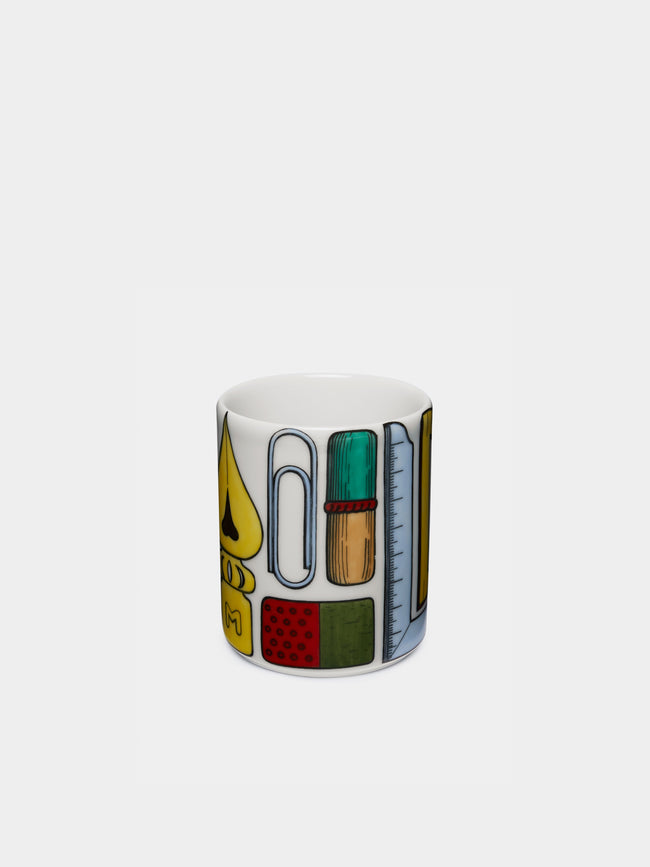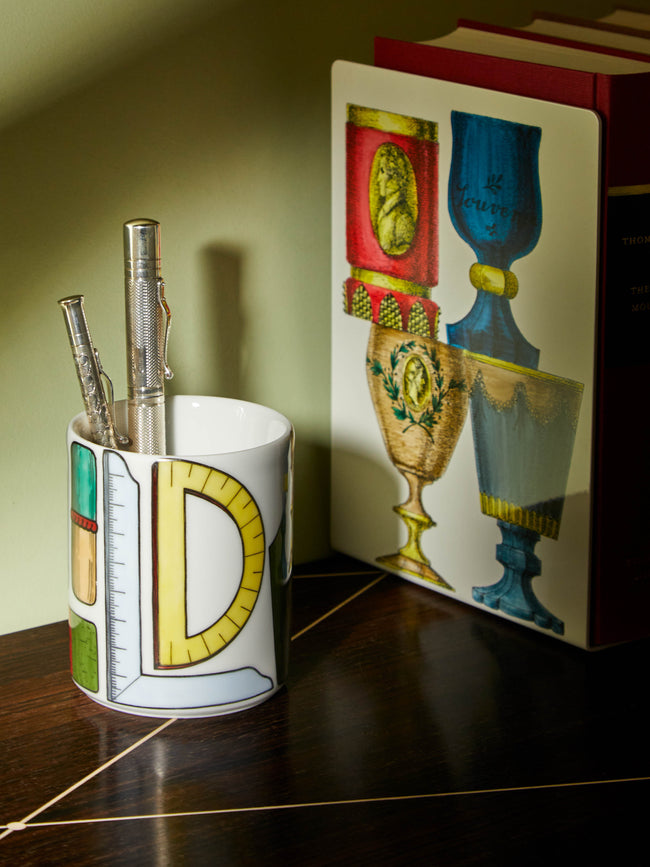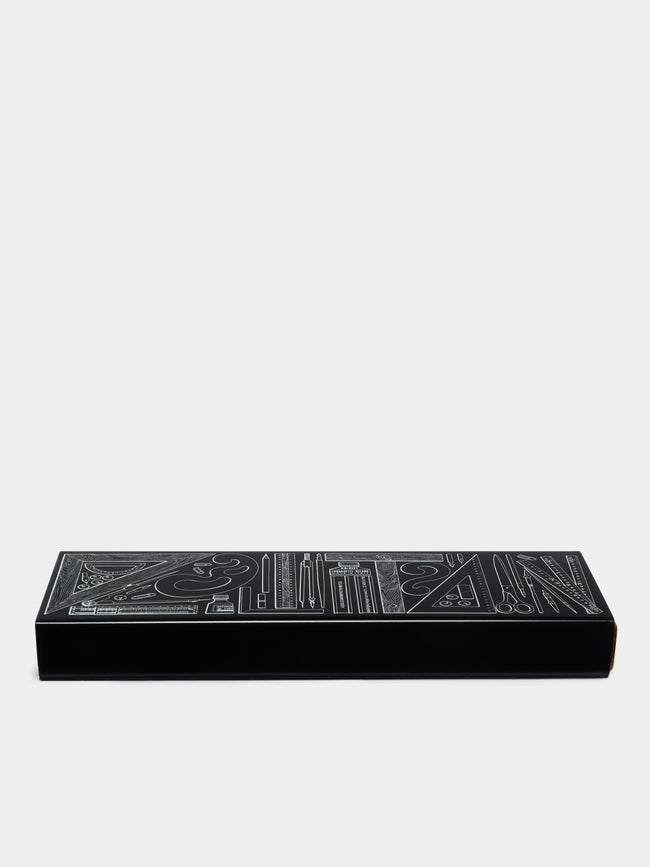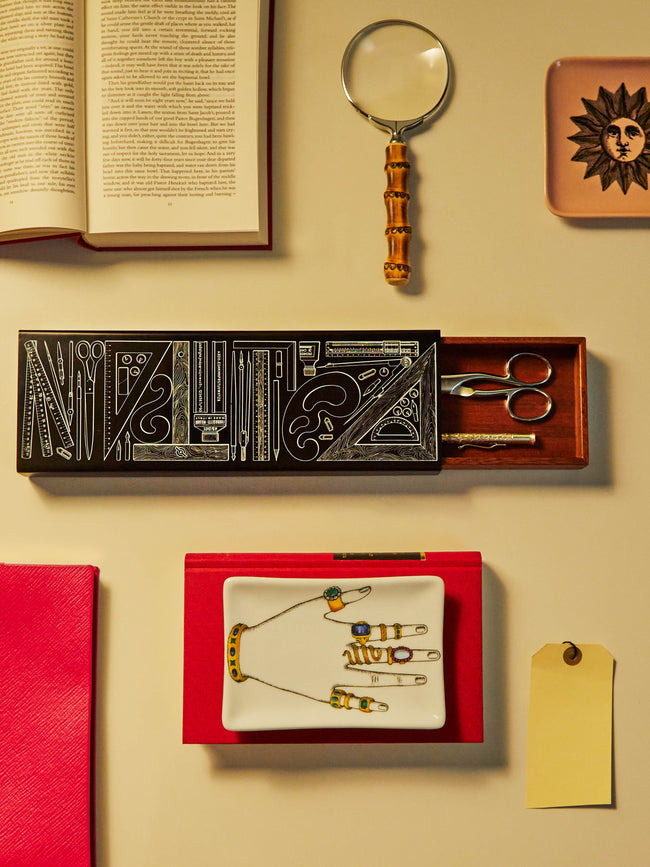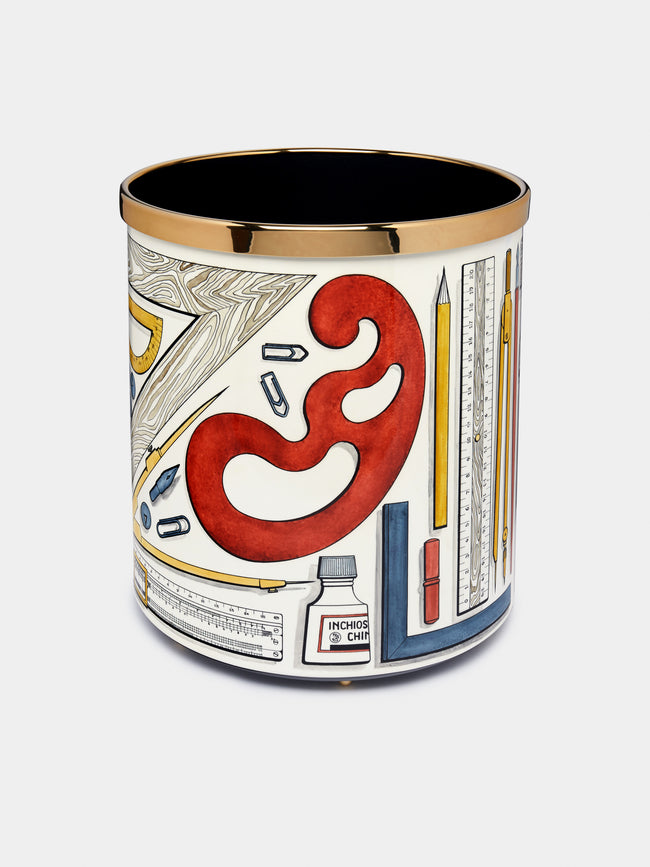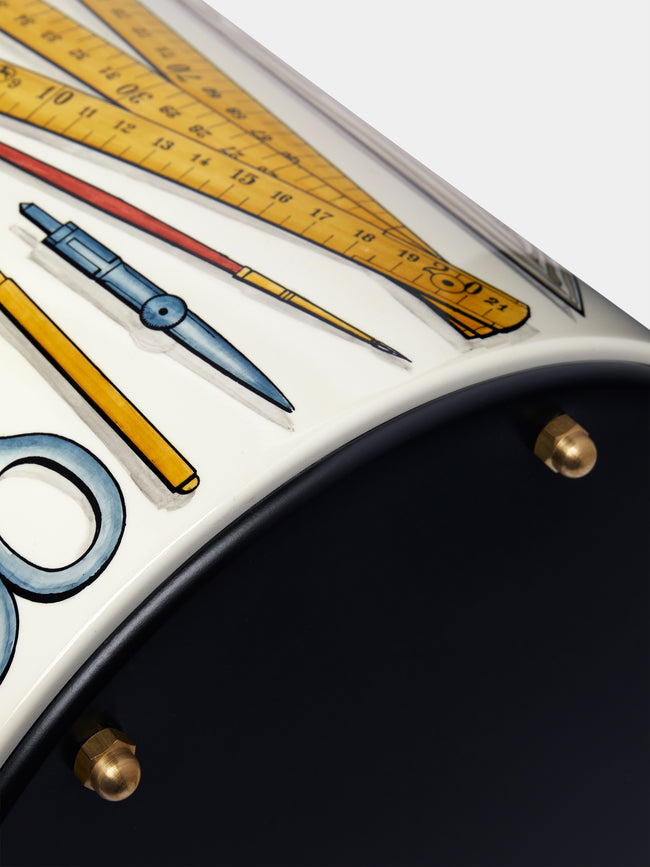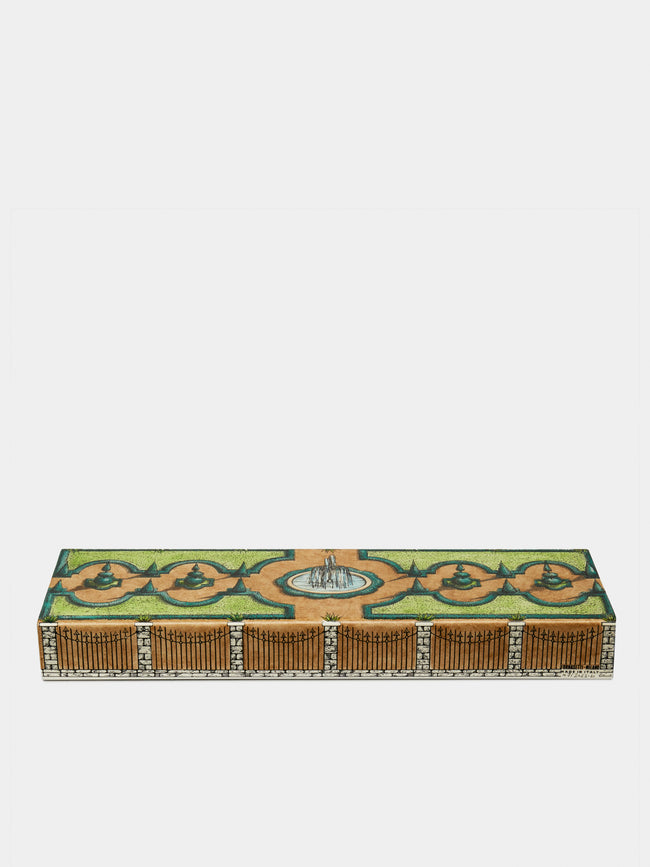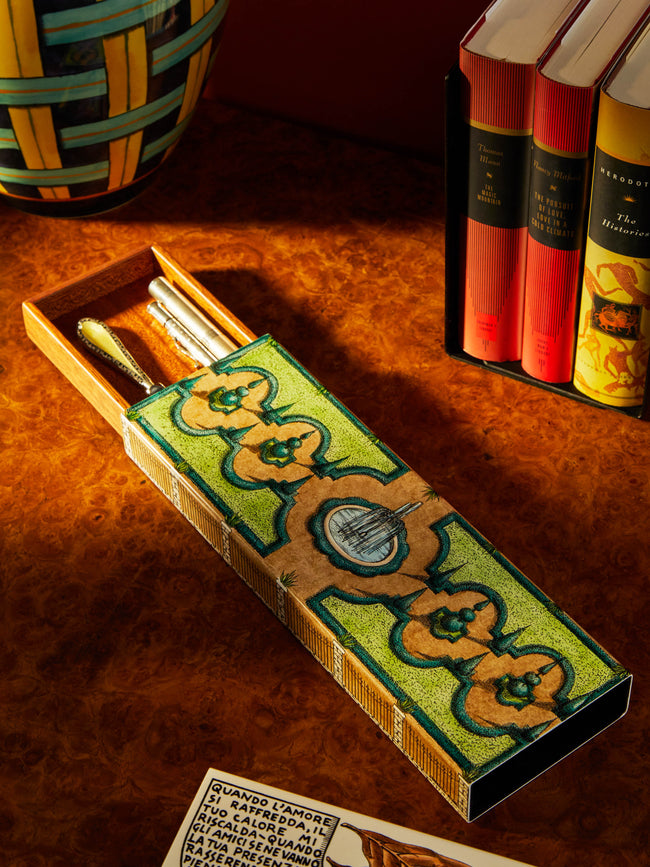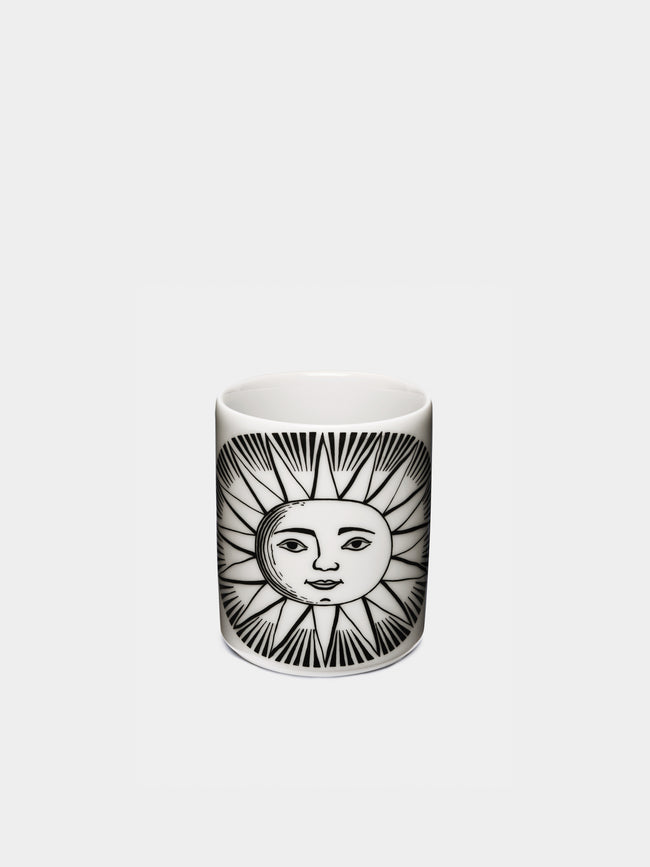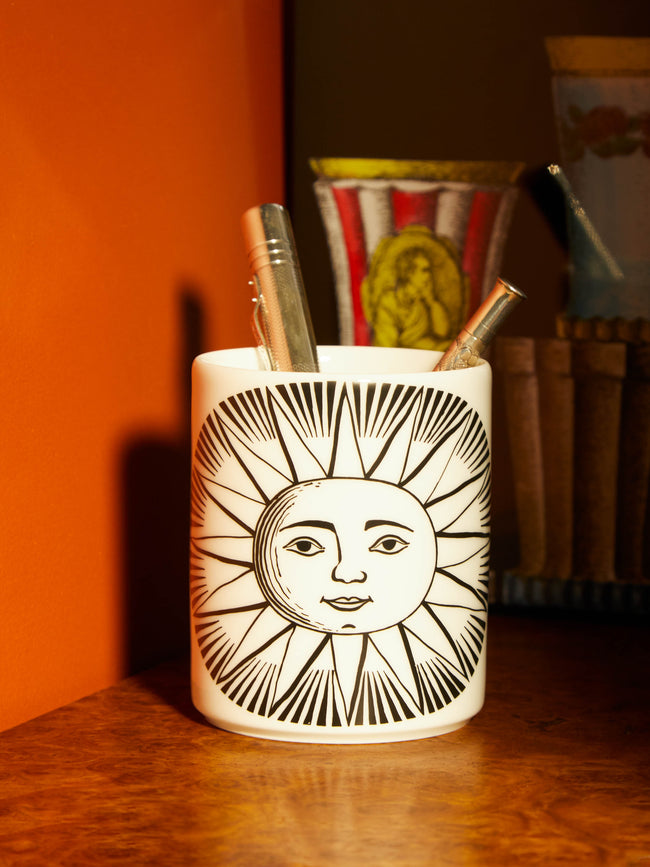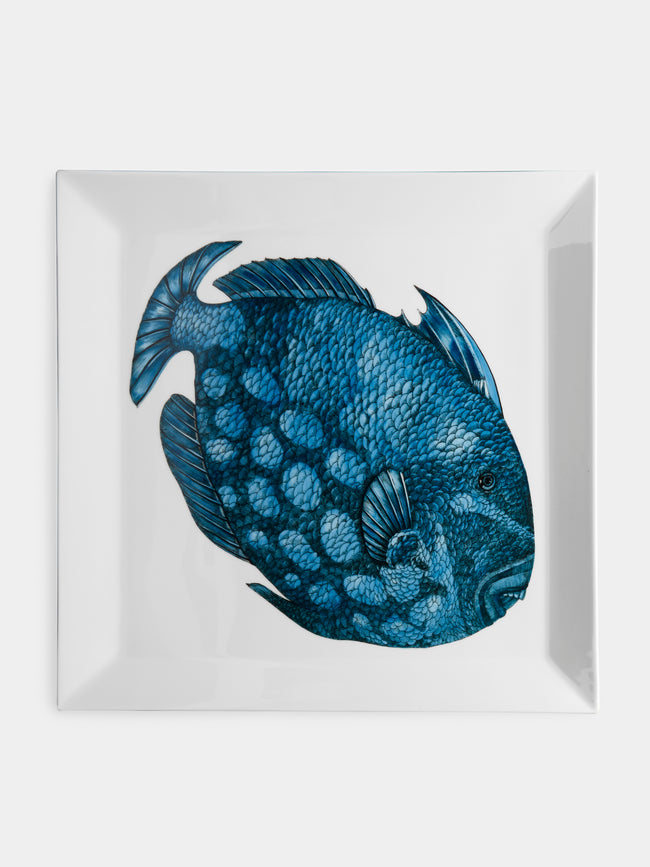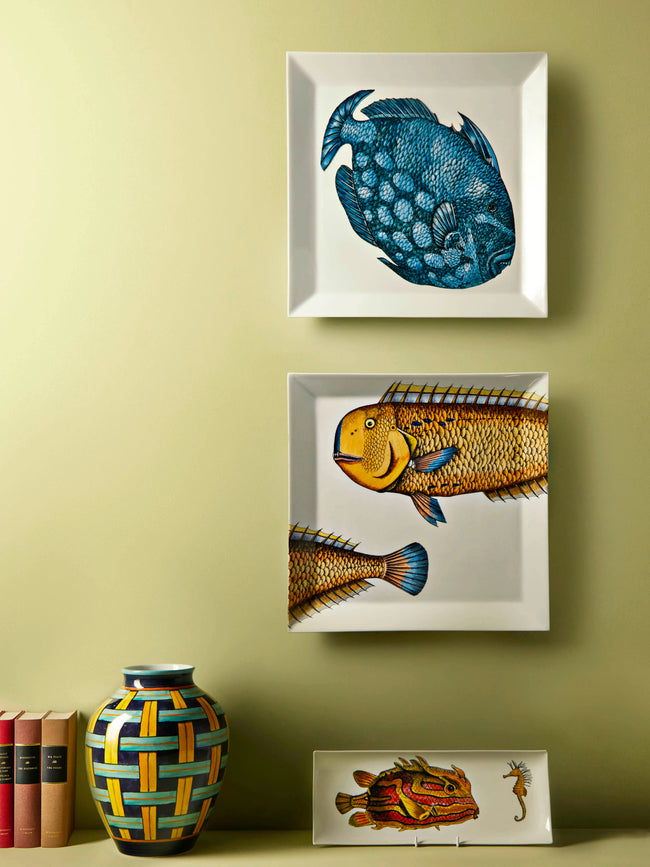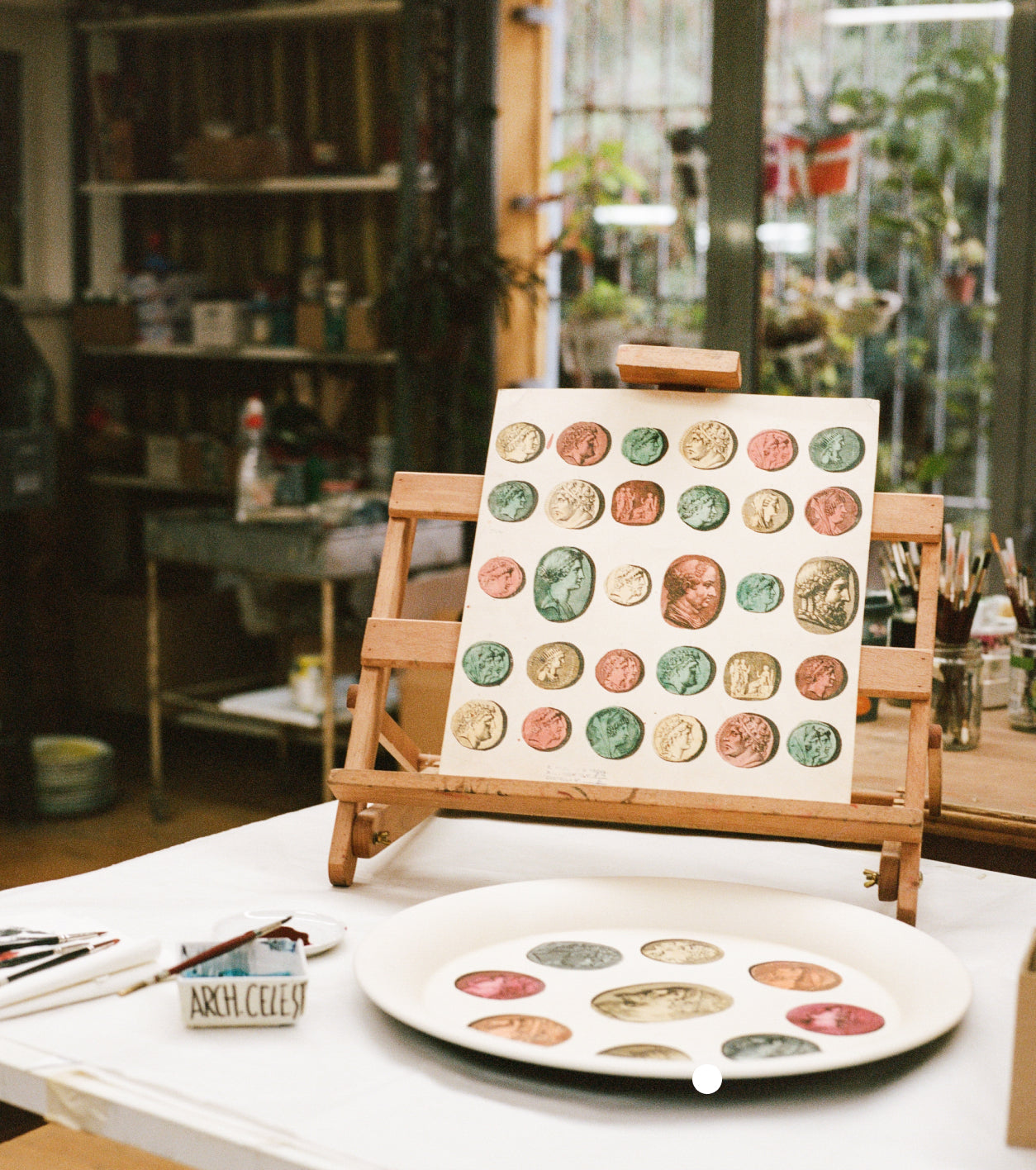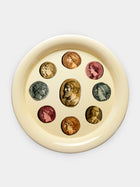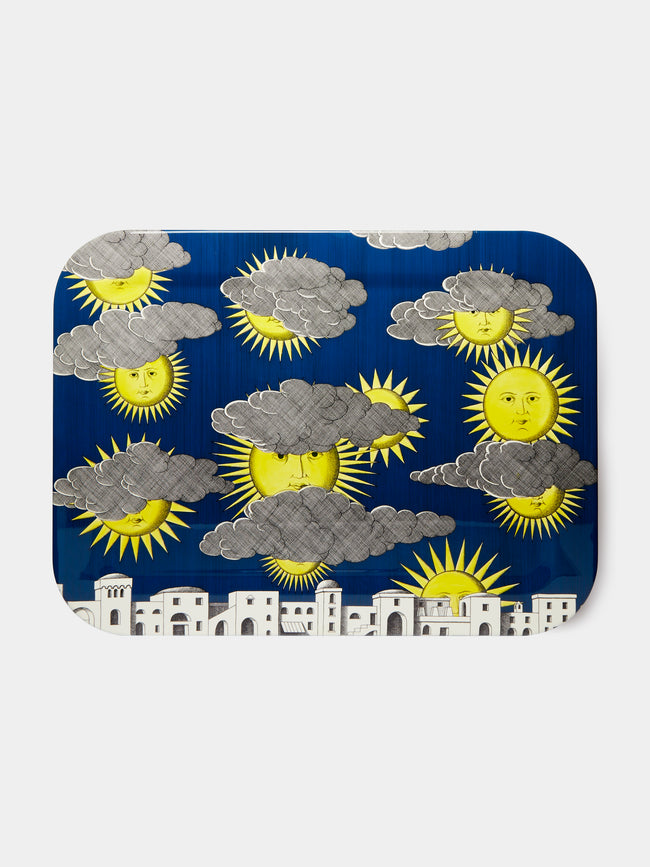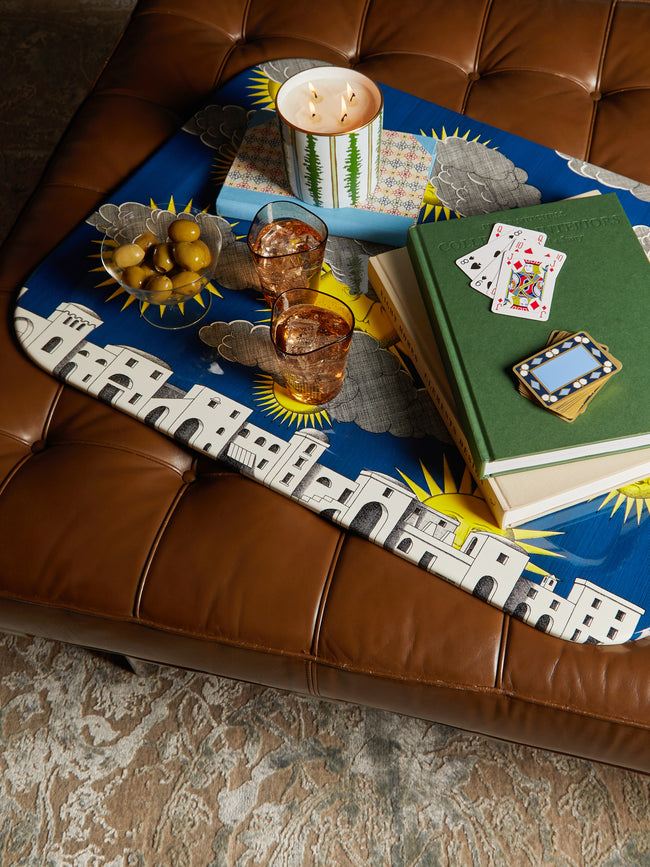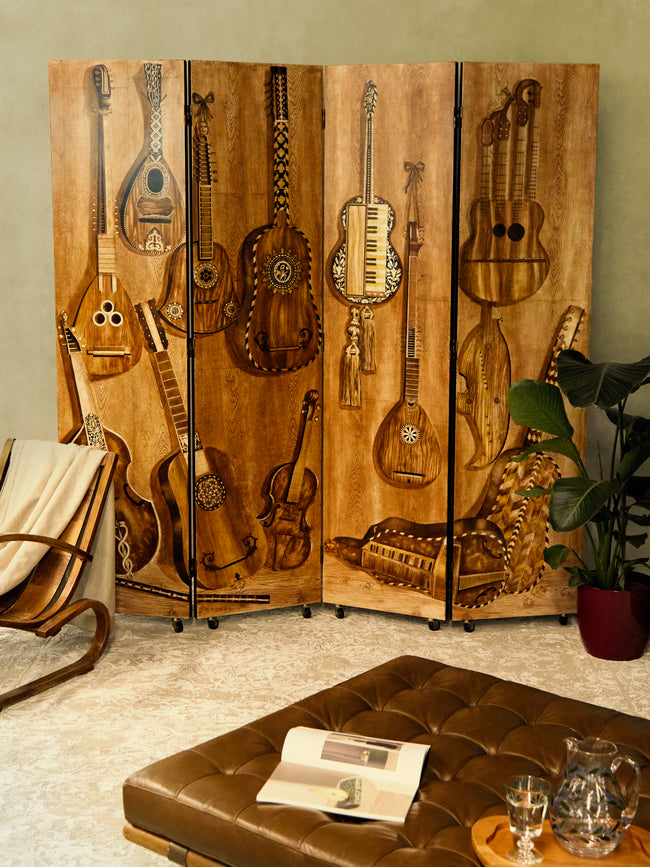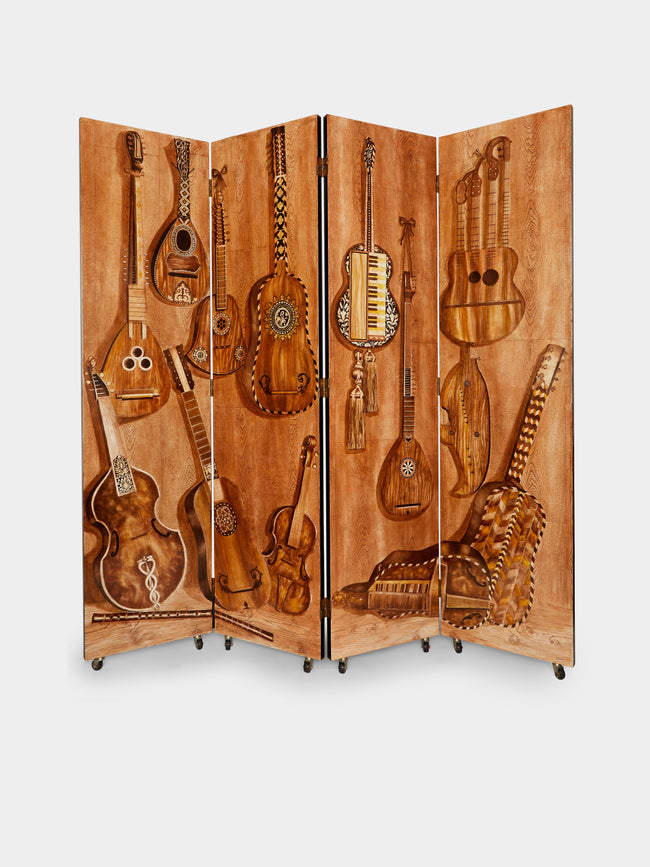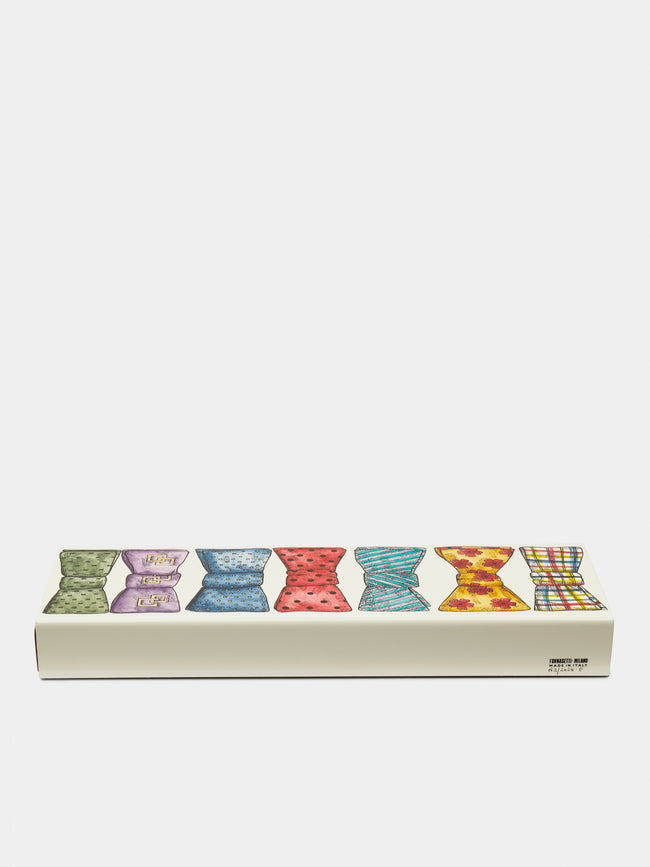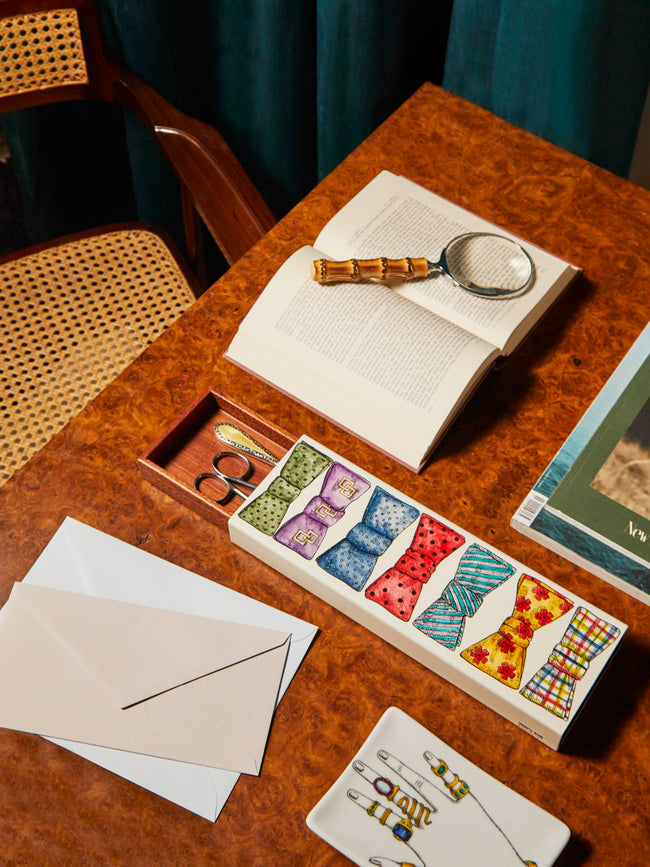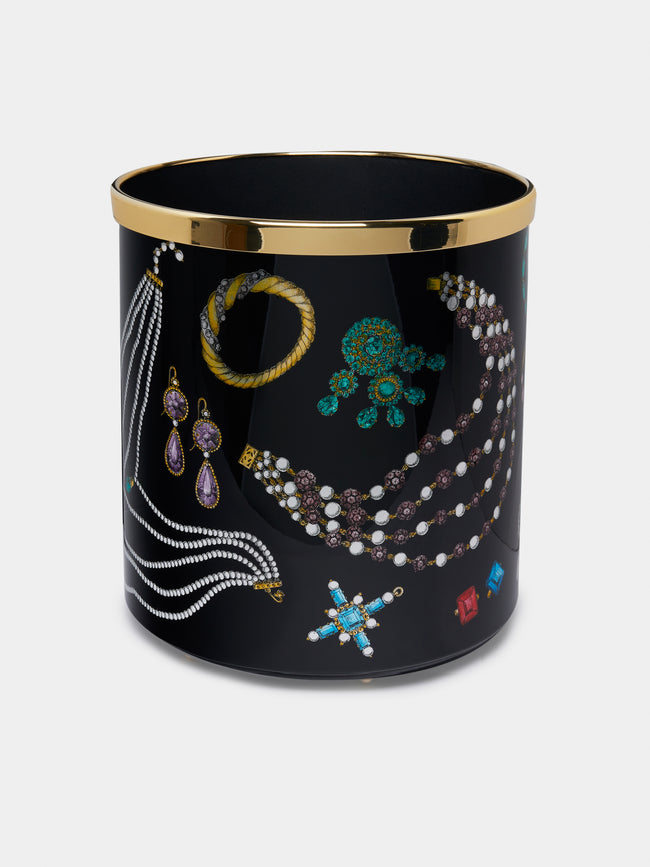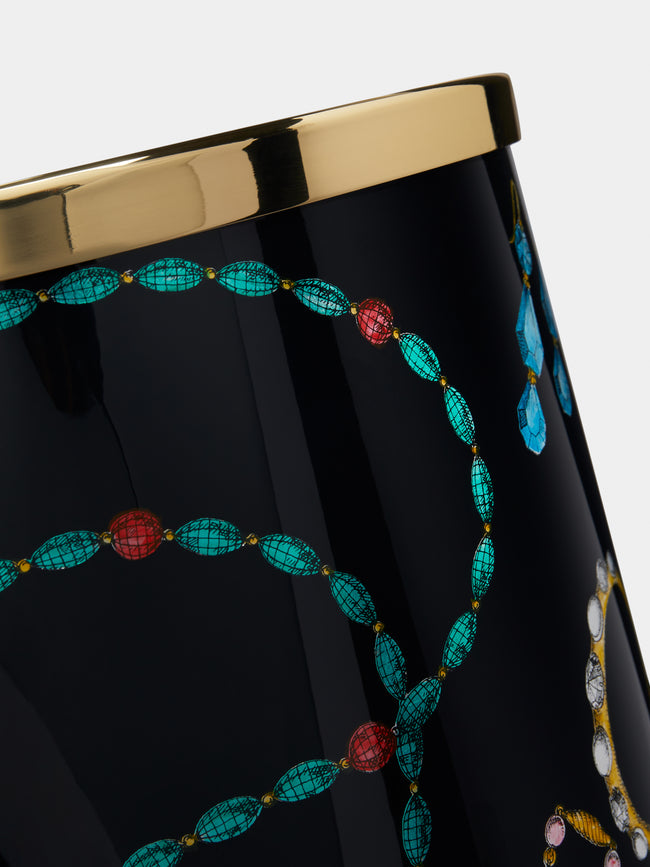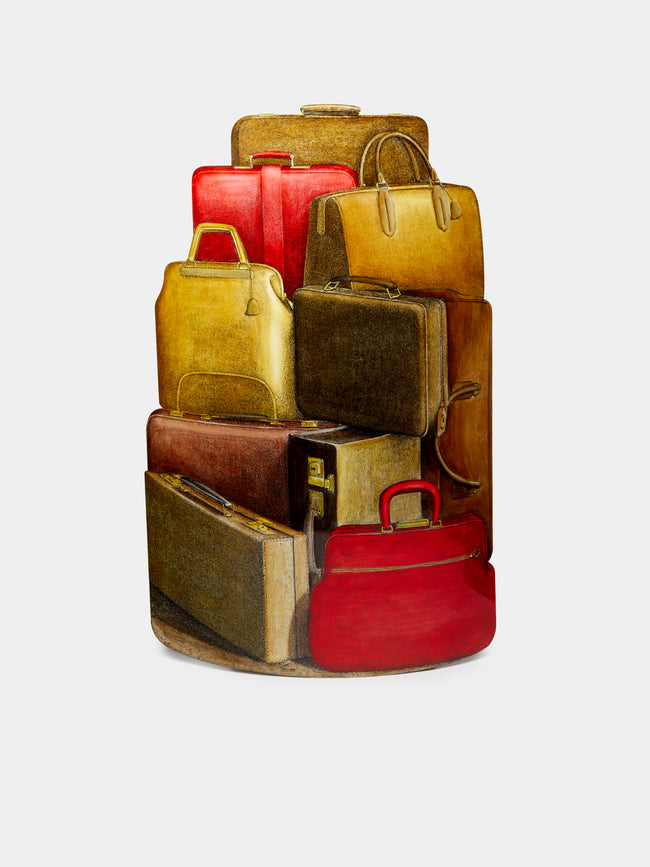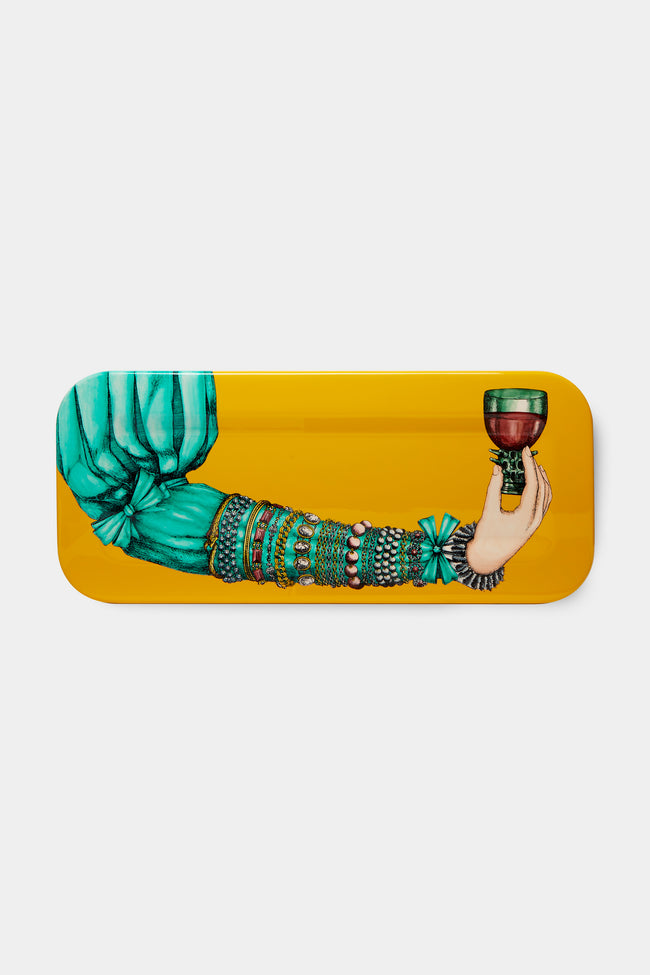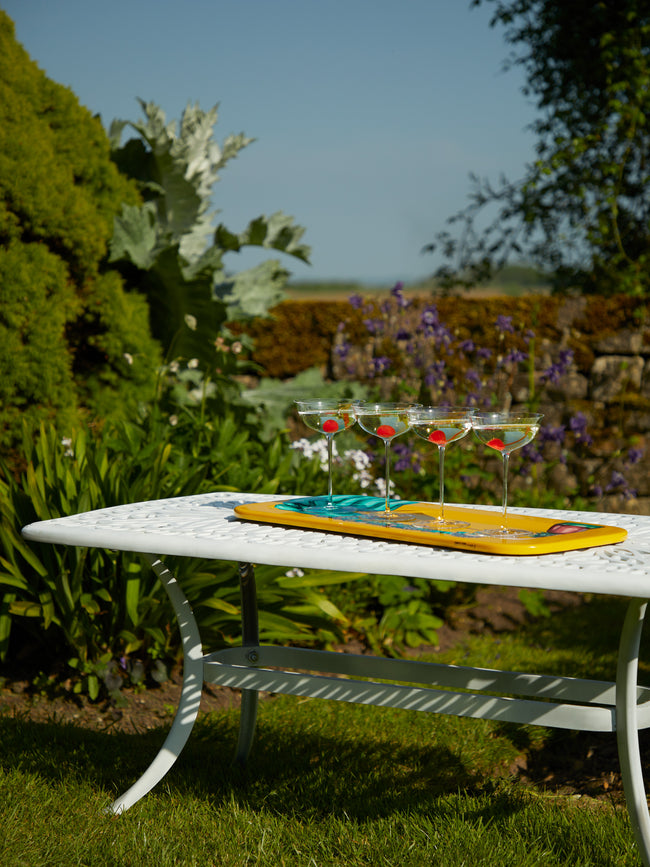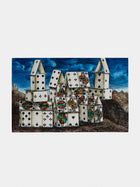
The many faces of Fornasetti
Rare is the design atelier whose vernacular takes in quite the sweep of influences seen at Fornasetti. Remnants of the classical and neoclassical worlds sit alongside architectural engravings, moons, stars and mythological creatures. It is dreamlike and rich in colour and imagery, yet rigorous in its graphic style with more than a dash of Surrealist humour.Nowhere is this more apparent than the wunderkammer cabinet of curiosities, where miniature opera sets jostle next to vintage brocante or ceramic birds in the entrance hall of Casa Fornasetti in the Città Studi quarter of Milan, the home of founder Piero Fornasetti.
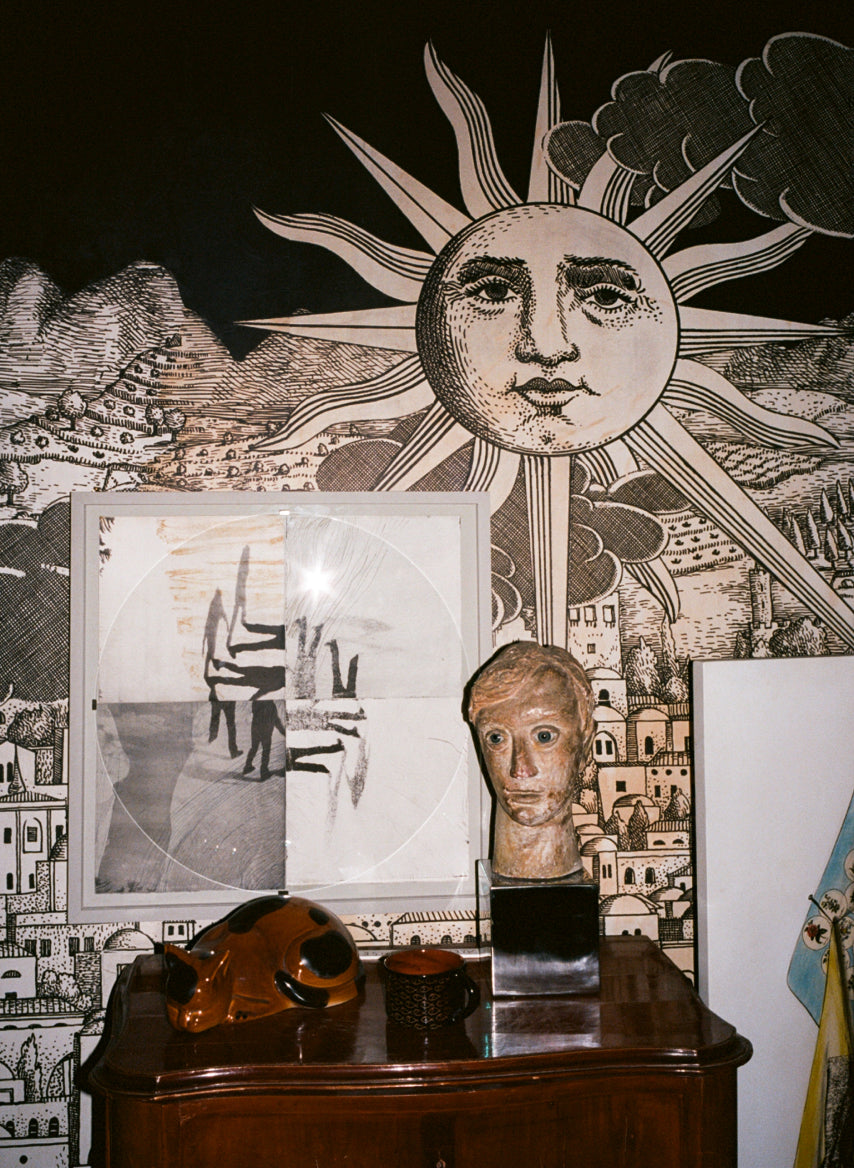
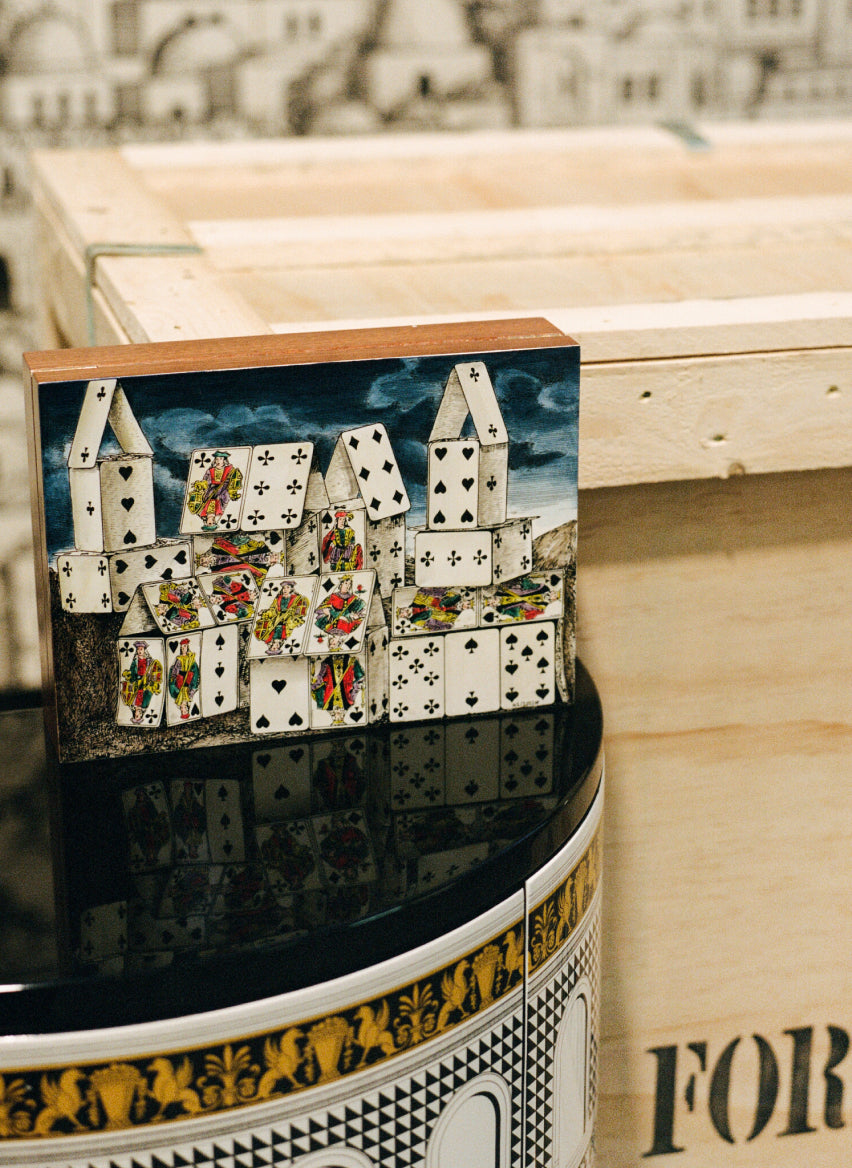

Piero defined his creation as “nourishment for the imagination”
The multidisciplinary artist founded his atelier, which is globally recognised for the design and decoration of timeless objects and pieces of furniture, in the 1940s.
A painter, sculptor, interior decorator and printer of art books, he was encouraged by his friend and client Gio Ponti to apply his artistic drawings to furniture and accessories. Such was his design flair and prolific output that he created over 13,000 objects during his lifetime.
Piero defined his creations as “nourishment for the imagination”, paving the way for the production of objects that transcend mere functionality.
Imagination has long been a central tenet: the ability to draw freely from any element that might be a potential source of inspiration. It has allowed the atelier to develop its limitless visual imagination, refusing to accept creative boundaries and refuting labels and trends.
For the past 30 years Piero’s son Barnaba has been at the helm as artistic director and guardian of his father’s legacy and it is thanks to him that Fornasetti’s reach today is so wide-ranging.
For Barnaba, no form of artistic creation is exempt: he is relentless in his questioning and research, influencing the brand to expand the application of decorative art beyond the design and production of products and into other cultural initiatives such as theatre sets, exhibitions, poetry, fashion and music.
La “follia pratica” or a practical madness, is the starting point, a fusion of inspiration and functionality that is expressed in everyday objects: pieces that deftly weave irony, nostalgia, metaphors and allusions together allowing furniture, accessories and porcelain to become conversation pieces. Still housed at Casa Fornasetti, the brand’s archives include over 80 years of history and tell the story of its artistic evolution over time.
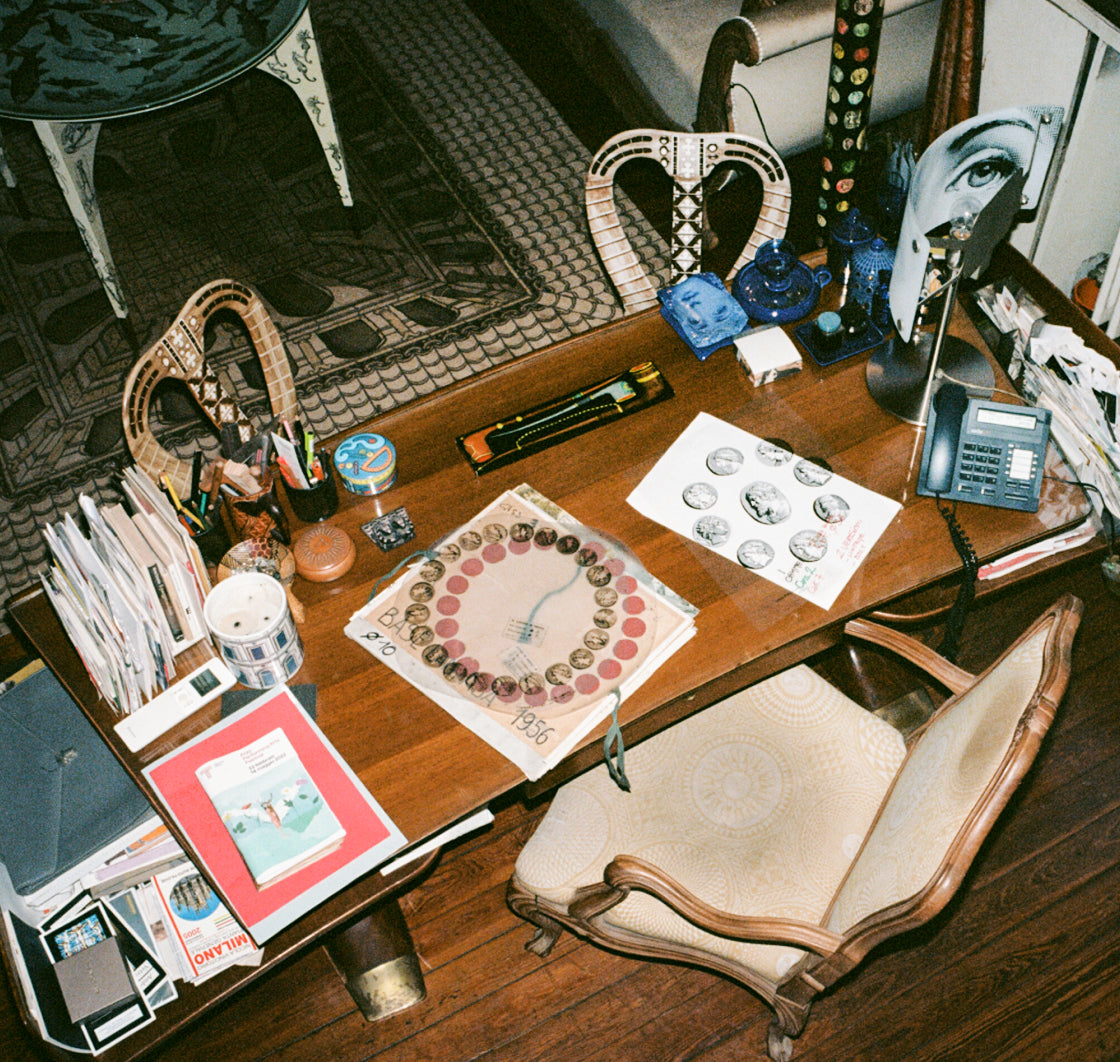
La “follia pratica” or pratical madness, is the starting point, a fusion of inspiration and functionality that is expressed in everyday objects
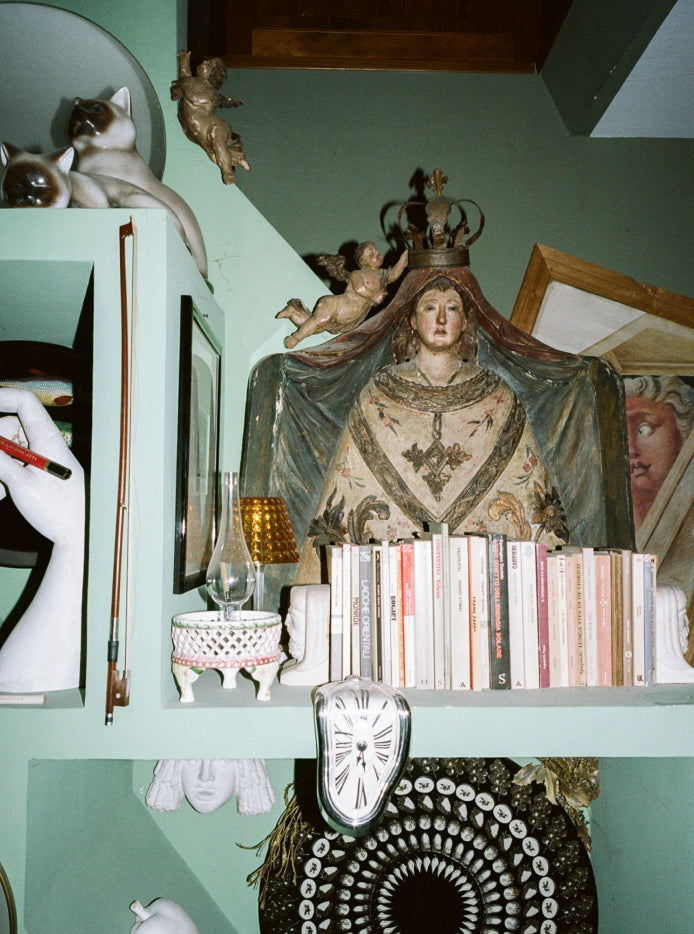

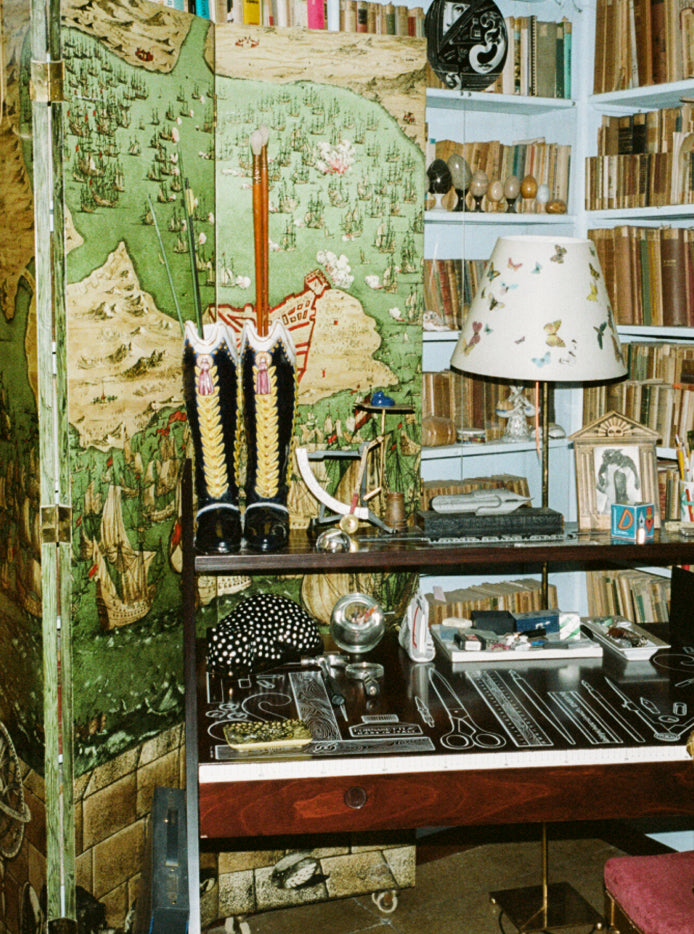
Every object produced in the Milan atelier is made in annual editions and entirely handcrafted using artisanal techniques such as lacquering, a process that can take at least seven months to complete. Here, skilled craftsmen adopt the same rigorous methods employed on the very first Fornasetti products.
The result is that no two objects are ever the same. Colour is applied to the surfaces by a painter who copies the original handpainted paper models. Only the printing technique has changed from lithography to serigraphy, an evolution that had already begun during Piero’s lifetime.
The atelier would have you believe that when you have a Fornasetti piece, you do not simply own it, you are inspired by it. Each one is an invitation to dream.

Every object produced in the Milan atelier is made in annual editions and entirely handcrafted
